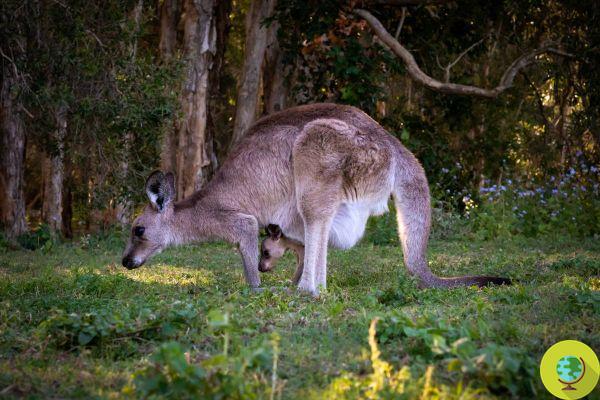
A study conducted by the University of Melbourne has shown that marsupials exhibit reproductive abnormalities due to herbicides
He is about to end up run over, his mother saves himHerbicides also threaten the fauna of Australia: a study conducted by the University of Melbourne has shown that marsupials exhibit reproductive anomalies due to atrazine, a chemical compound widely used in the great country of Oceania as a herbicide.
Atrazine is an aromatic molecule of the chlorotriazine "family", and was banned in the European Union as early as 2003, but not in Australia, where a recent study would indicate a dangerous impact on reproduction in marsupials, including small wallabies.
In recent months Australia has experienced devastation due to repeated fires that have destroyed hectares and hectares of flora and killed an exorbitant number of animals. But the tragedy, which has recently been directly linked to climate change, is therefore not the only threat.
Fires in Australia are clearly linked to global warming
“Exposure to atrazine is causing severe abnormalities in the male reproductive system in many animals - explains Andrew Pask, who led the work - triggering male sterility or even the reversal of sex from male to female in frogs ”.
It was already known that atrazine is capable of affecting a wide range of animals from mammals such as rats, but also amphibians, reptiles and even fish. But marsupials appear to be particularly at risk.
"With the unique breeding mode of marsupials and the young who complete their development in the pouch, the mothers are unknowingly transmitting the toxins into their mother's milk - the researcher continues - exposing their babies to environmental toxins ".
Glyphosate, pesticides and endocrine disruptors in the Po river: the new Ispra report
How is it possible confirm a direct impact?
The suspected chemical compound is not only not banned in Australia but widely used in spraying forests: research has found that the concentration of this molecule is disturbing almost everywhere, both in the rivers of the Australian state of Victoria and in the streams of Tasmania immediately after. such practice.
The researchers therefore exhibited in particular five adult female tammar wallabies to water contaminated with atrazine during pregnancy, childbirth and breastfeeding to understand the extent of damage caused by the chemical and examined the reproductive development of their young.
The number of individuals undergoing the study was kept small for ethical reasons, considering from the outset that the exhibition would have caused not a little damage to the puppies.
And unfortunately it did.
"Chemical substances such as atrazine alter the endocrine system, have the ability to influence development and increase susceptibility to disease - explains Laura Cook, first author of the work - Seeing such an impact even in a small sample is even more significant" .
Not only Bisphenol A: the "dirty dozen" of endocrine disruptors
Kangaroos and wallabies are at high risk because they eat sprayed crops and drink from contaminated water resources, where chemicals such as that covered by the work accumulate. And this is a real disaster.
The marsupials are in fact already undergoing a devastating population decline across Australia and in the country 21% of native mammals are currently at risk of extinction.
"As habitat destruction increases, marsupials are pushed onto agricultural land, attracted to food resources and the rare permanent water sources where they can be vulnerable to agricultural contaminants, like pesticides ”concludes the researcher.
The goal of the research, which was published in Reproduction, Fertility and Development, is to push for stricter guidelines on the use of atrazine in Australia.
In the hope - we add - that substances like these will be definitively banned.
Sources of reference: University of Melbourne / Reproduction, Fertility and Development
Read also:
- Dicamba: from Monsanto a new herbicide even more powerful (and harmful?) Than glyphosate
- Glyphosate, where it is found and how toxic is the herbicide (#stopglyphosate)
- A natural herbicide against weeds made from essential oils (from the weeds themselves)


























